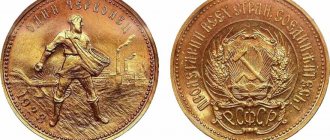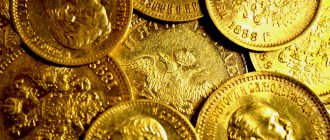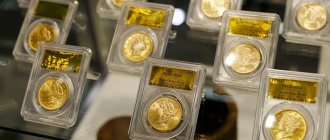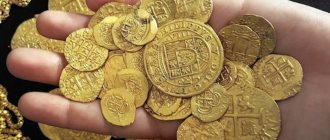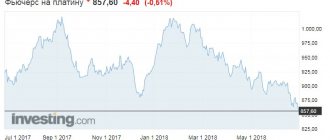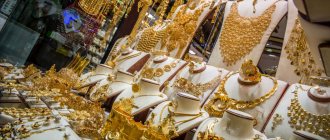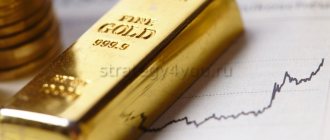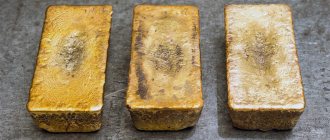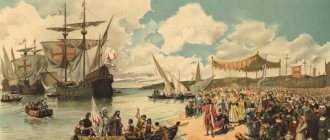Another catalog The RSFSR banknotes, introduced into circulation in 1919, almost immediately began to rapidly depreciate in value. There were several reasons: low quality of production, and therefore ease of counterfeiting, lack of money, distrust of the Soviet government among the majority of the population. By the end of 1921, prices were already expressed in millions of rubles. The problem was aggravated by the formation of numerous local and private money, which the population perceived as more stable. The redenomination carried out in October 1921 reduced the money supply by 10 thousand times, but could not stop inflation. In March 1922, at the XI Congress of the RCP(b), the question of returning the gold backing of the ruble without the direct participation of gold in circulation was raised. Under the NEP, the gold and foreign exchange system was supposed to help stabilize market relations.
The development of ideas took several months, as a result it was decided to equate the new monetary unit to the gold content of the royal 10 rubles (7.74 g), and to use the word “chervonets”, which has become established over recent decades, as the name. Banknotes of the RSFSR were not abolished; they were supposed to remain as exchange notes and gradually become equal in value to chervonets. In October 1922, the State Bank of the RSFSR was entrusted with the responsibility of issuing paper chervonets and providing them with gold, foreign currency, goods and securities. A month later, banknotes in denominations of 1, 3, 5, 10 and 25 chervonets appeared in circulation. They were one-sided, large in size with watermarks, and in appearance they closely resembled English pounds. The 1/2, 2 and 50 chervonets planned for release remained in the form of trial copies. The government set an exchange rate for chervonets that was close to the market rate, but slightly lowering it. For example, the market value of 10 gold Nikolaev rubles at the end of 1922 was equal to 12,500 rubles of the 1922 model, and the chervonets was equated to 11,400. The government also had to periodically announce the exchange of chervonets for gold; for this purpose, in 1923, a circulation of 2 million coins was produced with image of a sower. But a free exchange was never carried out, but chervonets were in great demand on the market, they were willingly exchanged for Nikolaev gold coins, sometimes even at a higher rate. The paper chervonets then performed the same role as the American dollar in the 90s, while remaining in every sense a Soviet currency. However, for small calculations it was completely inconvenient, and outside of large cities it was practically not used. This gave a new surge in prices, especially for food products. Despite the Soviet symbols, the chervonets soon began to be listed on foreign exchanges and served as a convertible currency as opposed to “wooden” payment tokens. This led to the growth of the Soviet economy and the stabilization of the ruble. By 1924, thanks to the chervonets, and in connection with the liquidation of local banknotes, the Soviet monetary system was no longer perceived as unstable. The denominations of 1922 and 1924 increased the purchasing power of the ruble almost to the level of 1914. The persistence of prices throughout the year led to the fact that the chervonets increasingly began to be expressed in ruble terms, and the law of 1925 officially equated it to 10 rubles. Since then, treasury notes with denominations of up to 5 rubles have been in circulation in the USSR - the successors of the “Sovznak” and State Bank notes - chervonets. Meanwhile, abroad, the chervonets were rapidly losing course, but in the conditions of the ever-increasing isolation of the USSR, this no longer mattered much. Chervonets of the 1922 model were printed until 1924-1927; formally they retained their payment force until the monetary reform of 1947, although in fact they were mainly replaced by later issues. The following table shows all types of paper chervonets of the 1922 model.
| Nom. | Obverse | Size(mm) | Water sign | release date | Date of seizure |
| 1 heart | 177x110 | Rhombuses made up of light and dark triangles, with the same smaller rhombuses inside them | November 27, 1922 | December 29, 1947 | |
| 2 hearts | No photo | 177x110 | No data | Not released into circulation | —— |
| 3 hearts | 177x110 | Numbers "3" between wavy lines going from top to bottom | November 27, 1922 | December 29, 1947 | |
| 5 hearts | 177x110 | Diamonds with numbers "5" inside | November 27, 1922 | December 29, 1947 | |
| 10 hearts | 177x110 | Numbers "10" located at different angles | November 27, 1922 | December 29, 1947 | |
| 25 hearts | 177x110 | Numbers “25” located at different angles | November 27, 1922 | December 29, 1947 | |
| 50 hearts | 177x110 | No data | Not released into circulation | —— |
The 1 chervonets banknote has two types, differing in the number of signatures. The first type (1922 - early 1925) has the signature of the manager “Sheinman” and 5 more signatures of officials, the second type (since 1925) has the signature of “Pyatakov” and three more signatures. The second issue is valued higher due to its lower circulation. All chervonets may have perforation or a diagonal inscription “SAMPLE”; sometimes there is an overprint “NON-PAYABLE”. These bills did not participate in circulation, but were considered demonstration. Collectors value such issues much higher than usual. Banknotes in denominations of 2 and 50 chervonets exist only with “SAMPLE” perforation. Too thin paper, large size, and the long period of circulation of the chervonets of 1922 led to the fact that very few chervonets of the first issue (especially large denominations) have survived to this day, and the condition of most of them is very low. The following is the average market value of bank notes of the 1922 model in Russian rubles.
| Denomination | F | VF | XF | UNC |
| 1 chervonets Signature "Sheinman" | 12 000 | 25 000 | Rarity | Rarity |
| 1 chervonets Signature “Pyatakov” | 22 000 | 40 000 | Rarity | Rarity |
| 1 chervonets “SAMPLE” | —— | —— | Rarity | Rarity |
| 2 chervonets “SAMPLE” | —— | —— | Rarity | Rarity |
| 3 chervonets | 45 000 | 90 000 | Rarity | Rarity |
| 3 chervonets “SAMPLE” | —— | —— | Rarity | Rarity |
| 5 chervonets | 50 000 | Rarity | Rarity | Rarity |
| 5 chervonets “SAMPLE” | —— | —— | Rarity | Rarity |
| 10 chervonets | 40 000 | 70 000 | Rarity | Rarity |
| 10 chervonets “SAMPLE” | —— | —— | Rarity | Rarity |
| 25 chervonets | 70 000 | Rarity | Rarity | Rarity |
| 25 chervonets “SAMPLE” | —— | —— | Rarity | Rarity |
| 50 chervonets “SAMPLE” | —— | —— | Rarity | Rarity |
| Denomination | F | VF | XF | UNC |
| 1 chervonets Signature "Sheinman" | 12 000 | 25 000 | Rarity | Rarity |
| 1 chervonets Signature “Pyatakov” | 22 000 | 40 000 | Rarity | Rarity |
| 1 chervonets “SAMPLE” | —— | —— | Rarity | Rarity |
| 2 chervonets “SAMPLE” | —— | —— | Rarity | Rarity |
| 3 chervonets | 45 000 | 90 000 | Rarity | Rarity |
| 3 chervonets “SAMPLE” | —— | —— | Rarity | Rarity |
| 5 chervonets | 50 000 | Rarity | Rarity | Rarity |
| 5 chervonets “SAMPLE” | —— | —— | Rarity | Rarity |
| 10 chervonets | 40 000 | 70 000 | Rarity | Rarity |
| 10 chervonets “SAMPLE” | —— | —— | Rarity | Rarity |
| 25 chervonets | 70 000 | Rarity | Rarity | Rarity |
| 25 chervonets “SAMPLE” | —— | —— | Rarity | Rarity |
| 50 chervonets “SAMPLE” | —— | —— | Rarity | Rarity |
* Note: F - below average condition (the bill is a little worn, may have slightly torn corners or soiling); VF - average condition (corresponds to most modern banknotes); XF - excellent, but not perfect, condition (there are one or two slight bends, no stains or dirt); UNC - perfect condition (even minor defects are completely absent); —— — cost unknown; “SAMPLE” - there is perforation “SAMPLE”, not put into circulation; Rarity - a very rare specimen, does not have a fixed price (estimated by demand); Chervonets of the 1922 model do not have rare series. Due to the rarity of the chervonets of the 1922 model, many copies are produced, their cost usually does not exceed 100-300 rubles. For many collectors, purchasing copies is the only option to collect a complete collection of chervonets, since the cost of some can exceed the cost of the car. The value of these banknotes led to an increase in the number of counterfeits (which began to appear even during the period of their circulation). Some forgeries of that time served as a means of causing damage to the national economy of the USSR, and sometimes for carrying out financial fraud abroad. But the bulk of fakes are modern, created to deceive collectors.
Appearance
The first mentions date back to the reign of Ivan the Terrible. Then the word “chervonets” began to displace “Ugric”. Since ancient times, this was the name given to the golden European ducats that came from Hungary. Although it was not necessarily the coinage of a given country. They were mainly used to pay for the labor of foreign mercenaries. What is a chervonets from an entomological point of view? This refers to a coin made of “red gold.” But we are not talking about the color of the metal, but about its quality. In other words, this is what high-grade coins were called.
The modern, more popular analogue is red (square, maiden, corner). From the jewelry itself, we should remember the minting of gold kopecks, which took place before the Time of Troubles. But the real royal chervonets appears during the time of Peter I. Then a major monetary reform was carried out. As a result, the appearance of the coins completely changed. In addition, the basis is not a penny, as it was before, but a silver ruble coin. It was then that the first real chervonets (including double ones) appeared. They were gold coins that had no face value. Their weight and fineness corresponded to Dutch ducats. The difference was the presence of a portrait of Peter I.
What is a chervonets
Chervonets is one of the traditional names of the coin, which has a denomination of 10 units, but this was not always the case. The Golden Chervonets got its name thanks to the phrase “chervonets gold”, which in the old days meant the high quality of the precious metal.
Initially, this coin weighed about three and a half grams, but it did not have a face value. At different times, the chervonets also had different equivalents from two to four silver rubles. Often, chervonets could be called any gold coins that had a large denomination, for example, half-imperials and imperials. The first gold chervonets, which became known as a coin of Russian minting, is the Ugric gold one, made in the 15th century during the reign of Ivan III.
Imperial period
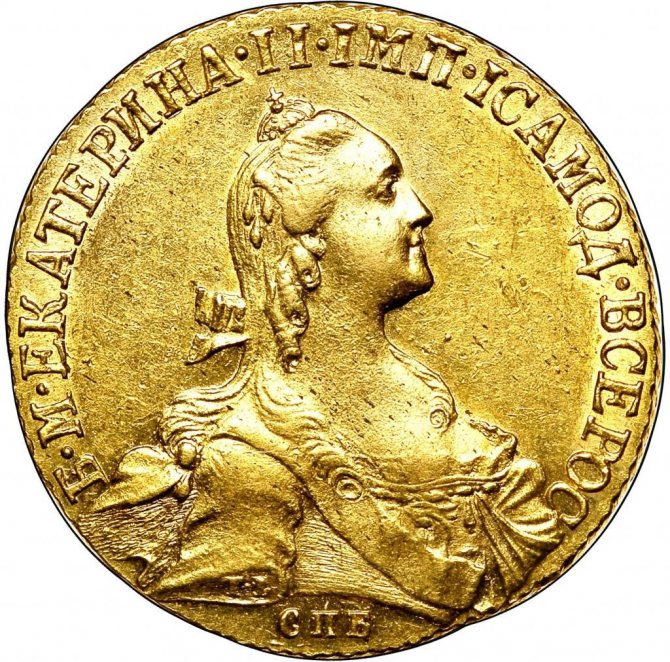
Initially, at the time of the reorganization of the state by Peter I, when foreigners were paid with Russian gold coins, they had to pay crap. This is a certain percentage, which is associated with the weak demand for domestic money abroad. Surprisingly, at that time, even means of payment fully backed by precious metal could not fully compete with products of Dutch coinage. Although the created coins, in all respects, could claim to be full participants in circulation (which was practiced in the country). Chervonets without denomination were minted with short interruptions until the end of the 18th century. Then there were two, five and ten ruble coins. The first was characterized by slightly greater weight, but a smaller sample. The latter was called imperial. It was necessary to solve the problem of the lack of demand for the imperial currency.
In its own way, an adventurous and interesting solution was introduced in 1768 by Catherine the Second. Then secretly they began to mint exact copies of the popular Dutch ducats. Moreover, they were used not only for foreign purchases, but also when equipping Russian companies and supplying the army. These coins were nicknamed foreheads. It is believed that this is due to the applied image. This is the knight-archer, who has a helmet pulled over his forehead. In 1849, the minting of these coins was stopped by Holland. Although in the Russian Empire they continued to be created until 1868, until a note of protest was received by the Minister of Foreign Affairs. For another 17 years, three-ruble coins were minted, which had a similar weight. This is what a chervonets is during its formation.
Chervonetsy in Tsarist Russia
The minting of gold chervonets under Peter I lasted from 1701 to 1716. For payments within the country, the minting of gold coins was established, which had a denomination of two rubles, but they were of low standard. The coins depicted St. Andrew the First-Called, who is the patron saint of Russia.
The minting of gold chervonets resumed in 1729 during the reign of Peter II. When Elizabeth ascended the throne, coins began to depict, in addition to state symbols, the date of minting.
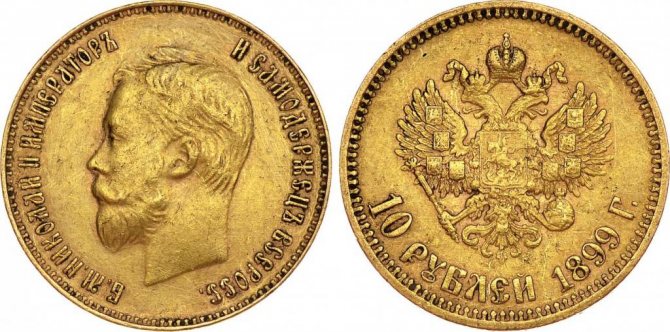
Under Emperor Paul I, the production of coins that had no nominal value was resumed for a short period of time. They had the standard and weight of a standard chervonets, but these coins were quickly abandoned and minted with the denomination restored. They began issuing five and ten ruble coins, which had a high standard of 986, which was later reduced to 916. After this, coins without denomination were no longer minted.
At that time, chervonets were coins minted from 917-karat gold in denominations of three rubles and weighing 3.93 grams. They were issued since 1869 during the reign of Alexander II.
When Nicholas II ascended the Russian throne, from 1898 to 1911, chervonets began to be minted, which had a denomination of five, seven and a half and ten rubles.
Changes during the late empire
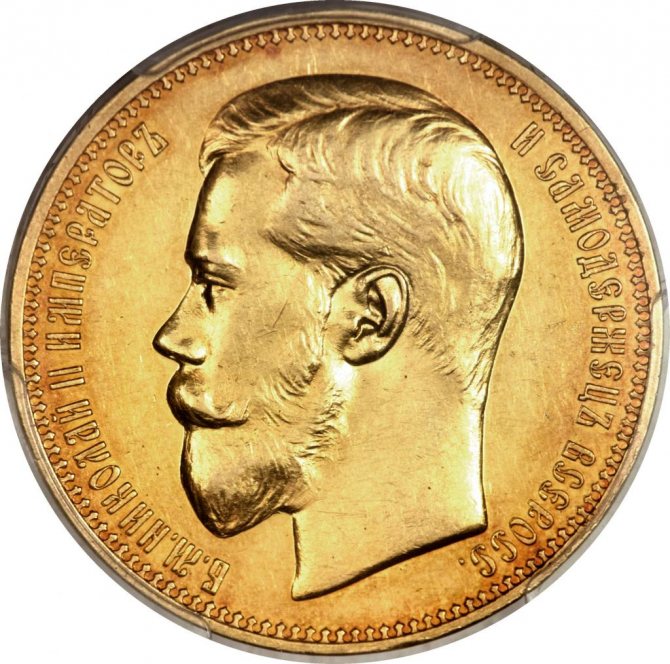
The Nikolaev gold chervonets has a number of features. Formally, he was an imperial. But in fact - only 2/3. Why is that? The gold chervonets “Nicholas 2” was turned into a transitional coin during the Witte era. The reason is simple - the Witte reform led to the fact that the content of the gold ruble “shrinked” by 1.5 times. What was the reason for this situation? The fact is that the circulation of gold and silver coins was disrupted due to inflation. But for gold this process is not relevant. A situation arose when coins made of this metal circulated at the market rate as a parallel currency. The main bet was made on simple paper money (credit cards). In order to equalize the cost of candy wrappers and gold, it was precisely necessary to cut the coins by one and a half times. The silver ruble remained unchanged due to the fact that the price of the precious metal dropped significantly at the end of the nineteenth century.
Soviet period
Perhaps the most famous chervonets coin belongs to this period. After the civil war, the country's financial situation was unenviable. Therefore, it was decided to carry out a reform. The changes invented by Witte were taken as a model. It was planned to resume circulation of hard money in the country. The question arose about the designation. Ideology did not allow the use of the official royal name “imperial”. Everything was moving towards being called “federal”. But then they remembered about the chervonets. We decided that we could limit ourselves to this. And the gold content was similar to the 10-ruble coin from the time of Nicholas II. Until the year 25, the coin was quite actively used on the exchanges of Harbin, Rome, Berlin, and London.
How the chervonets saved the situation
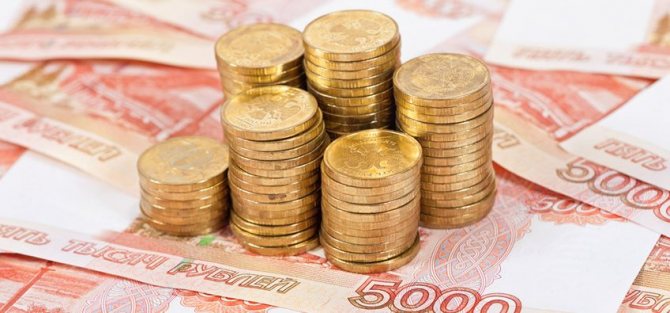
In the initial period of the Soviet Union, the gold coin played a big role. Due to the outbreak of inflation, receiving wages lost its meaning. For example, before the revolution, 20-30 rubles were enough for a family for a month, and in the fall of 1921, just one pound of potatoes cost twenty thousand. Settlement bonds have gained popularity. True, their course was constantly changing. We must not forget that the territories not controlled by the Soviet government also printed their own money. All this diversity had one unifying property - the chervonets was highly valued. The year of issue of Soviet coins had not yet arrived, so they paid with imperials with the image of Nicholas II. In 1922 it was decided that it was necessary to create a parallel currency using the gold standard. It was then decided that the amount of pure precious metal should be equal to what was in ten rubles during the time of Nicholas II. This money was called chervonets.
Is it worth investing in gold coins?
Investments in rare banknotes are certainly reliable. You invest in both gold and antiques. Such a gold coin can be sold at least at the current price of the precious metal. But everyone decides the question of benefit for themselves, since this method has its own nuances.
Advantages and disadvantages
Pros:
- Low risk of capital loss.
- The price of rare chervonets from Tsarist Russia is constantly growing.
- In itself, the passion for rarities is a prestigious hobby.
There are also disadvantages. I include among them:
- Low liquidity. Selling at a good price quickly will most likely not work.
- Storage costs (secured premises, safe deposit box).
- Long-term investment. To get a tangible income, you either need to wait 20-50 years, or get incredible luck in the person of a fabulously generous client.
- High entry price when it comes to rare specimens.
Implementation
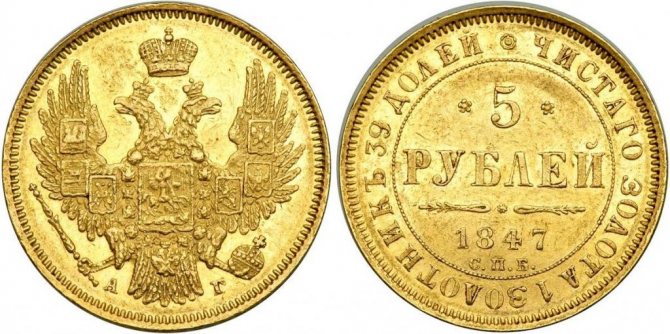
It is necessary to understand that not only coins were minted, but banknotes were also issued. Their gold content was indicated on the tickets. At the same time, the exchange for precious metal was carried out freely. More than two million coins were minted in 1923 (and presumably 1924). Also in 1925 there was another 600,000 circulation, but most of it was melted down. From 1975 to 1982, the same coins were additionally reissued. Their number ranges from 6.6 to 7.4 million units. Coins issued during the Soviet Union are also known as “Sower”, due to the image of a peasant planting seeds. The second large-scale release was timed to coincide with the 1980 Olympics. Now they are considered, as a rule, from the position that these are investment coins. Separately, it is worth mentioning one hundred thousand chervonets, which were created for collectors and are of improved quality.
Chervonetsy model 1937
In 1938, all denominations were updated, including treasury notes of 1, 3 and 5 rubles. In January 1938, new banknotes in denominations of 1, 3, 5 and 10 chervonets were issued. These State Bank notes were developed back in 1937 and are dated accordingly, although they were issued for almost a decade. This was the first money with a portrait of V.I. Lenin (author - A.R. Eberling, cliche engraver - A.G. Blum). The bills themselves had a unique double-sided design; the denominations differed only in the size and color of the main print. There were no watermarks. Lenin's image will later appear on large banknotes of 1947, then on banknotes of 1961, after which it will appear on the money of 1991-1992. However, these will no longer be chervonets; the reform of 1947 will completely abolish the circulation of such denominations. From now on, a chervonets will be called a banknote with a face value of 10 rubles, and all banknotes with a face value of 10 rubles and above will become tickets of the State Bank of the USSR. The following table shows the main types of tickets of the State Bank of the USSR of the 1937 model.
| Nom. | Obverse | Reverse | Size(mm) | release date | Date of seizure |
| 1 heart | 161x80 | January 1938 | December 29, 1947 | ||
| 3 hearts | 171x88 | January 1938 | December 29, 1947 | ||
| 5 hearts | 180x91 | January 1938 | December 29, 1947 | ||
| 10 hearts | 192x100 | January 1938 | December 29, 1947 |
Chervonets of the 1937 model have no varieties. The following is the average market value of USSR State Bank tickets of the 1937 model in Russian rubles.
| Denomination | F | VF | XF | UNC |
| 1 chervonets | 350 | 1200 | 2200 | 4000 |
| 1 chervonets “SAMPLE” | —— | —— | Rarity | Rarity |
| 3 chervonets | 600 | 1400 | 3000 | 8000 |
| 3 chervonets “SAMPLE” | —— | —— | Rarity | Rarity |
| 5 chervonets | 450 | 1200 | 2500 | 7500 |
| 5 chervonets “SAMPLE” | —— | —— | Rarity | Rarity |
| 10 chervonets | 800 | 1700 | 4500 | 10000 |
| 10 chervonets “SAMPLE” | —— | —— | Rarity | Rarity |
* Note: F - below average condition (the bill is a little worn, may have slightly torn corners or soiling);
VF - average condition (corresponds to most modern banknotes); XF - excellent, but not perfect, condition (there are one or two slight bends, no stains or dirt); UNC - perfect condition (even minor defects are completely absent); —— — cost unknown; “SAMPLE” - there is perforation or a large inscription “SAMPLE”, not put into circulation; Rarity - a very rare specimen, does not have a fixed price (estimated by demand); Chervonets of the 1937 model do not have rare series. Catalog last modified: 03/06/2019
Select catalog Go to discussion
How valuable is he?
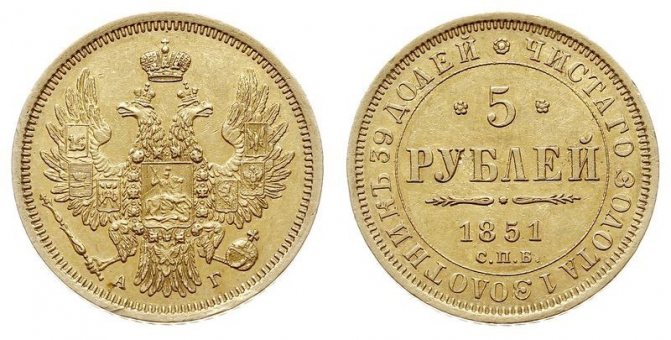
How much is Chervonets in modern money? If we talk about analogues of Dutch ducats, then they contained 3.48 grams of pure gold. Soviet chervonets contain 7.74 g of precious metal. If you estimate it by the weight of gold, then you need to multiply the value in grams by the price. That is, Soviet chervonets cost approximately 20,000 rubles. But in practice, their price is a little more, something around 21-24 thousand rubles. This is if we talk about coins issued in the 70s and early 80s. Cash from the beginning of the Soviet Union is estimated to be about three times more expensive. And if we talk about royal coins, their price is even higher, due to their cultural significance and the significant number of collectors who want to get their hands on them. That is, the value is formed not only due to the presence of a valuable metal (although it can be sold based on this alone), but also due to cultural and collector's desirability and value.
Chervonets "Sower"
The gold chervonets “Sower” was issued in 1923 simultaneously with paper money of the same denomination of 10 rubles. The coin got its name thanks to the peasant depicted on the reverse against the backdrop of a factory and a plow, who sows wheat from a special bag. The reverse of the coin featured the emblem of the RSFSR and the inscription “Workers of all countries, unite.” The author of the drawing was A.F. Vasyutinsky, who was the main medalist of the mint. Subsequently, he created a drawing based on which the Order of Lenin and the first TRP badge were made. The coin was issued at the Petrograd Mint Factory (yard) with a circulation of 2,751,000 pieces.
Many historians agree that the Soviet gold chervonets was minted exclusively for settlements with foreign countries and the coins practically did not participate in domestic circulation. However, foreigners most often refused to accept these chervonets because of the Soviet symbols depicted on them. Then it was decided to mint coins of the royal type, and use the new chervonets within the country. So from 1925 to 1927 such coins were issued, but the issue date of 1911 was on the reverse.
The Sower Chervonets was minted not only in 1923, but later it was issued in several more editions.
